History
 We all know that travel plans can be hampered due to weather conditions, and for drivers, one of the worst weather situations for driving is fog. Of course, weather can affect more than just travel plans. Over the years, we have seen many sporting events called for weather. Everything from snow, to rain, and even fog, although a game called for fog is probably less likely to happen than rain or snow. Still, it isn’t outside the realm of possibilities. It wouldn’t make good sense to try to catch a baseball in the fog. Someone is likely to get hurt. So, games would need to be called for fog, but maybe because a lot of games are played in the afternoon, the fog has had time to burn off.
We all know that travel plans can be hampered due to weather conditions, and for drivers, one of the worst weather situations for driving is fog. Of course, weather can affect more than just travel plans. Over the years, we have seen many sporting events called for weather. Everything from snow, to rain, and even fog, although a game called for fog is probably less likely to happen than rain or snow. Still, it isn’t outside the realm of possibilities. It wouldn’t make good sense to try to catch a baseball in the fog. Someone is likely to get hurt. So, games would need to be called for fog, but maybe because a lot of games are played in the afternoon, the fog has had time to burn off.
In one strange occurrence, during a soccer match between Charlton Athletic and Chelsea in 1937, in the United Kingdom, goalkeeper for the UK’s Charlton Athletic, 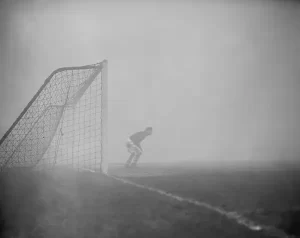 Sam Bartram once stood alone on the field for 15 minutes because he didn’t realize the game had been called off due to heavy fog. Now, if you ask me, that’s ludicrous. Why would he just stand there at the goal for 15 minutes after the game was called!!
Sam Bartram once stood alone on the field for 15 minutes because he didn’t realize the game had been called off due to heavy fog. Now, if you ask me, that’s ludicrous. Why would he just stand there at the goal for 15 minutes after the game was called!!
During the match, a thick fog rolled over the field. It was a very thick fog. The referees decided that this fog was so think that the players were not safe running all over the field, much less dodging a ball too. So, the match was called off, but somehow, Bertram didn’t hear the call, or the whistle or whatever was used to call the game, so he stood there at is post…the goal at the end of the field…alone. Somehow, no one told Bertram that the game had been called, probably because the couldn’t see that he was still out there. So, 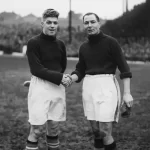 Bertram waited for 15 minutes for the ball to come his way…a full 15 minutes. That’s crazy. How could he have had no idea? Well, somehow Bertram just thought his team was on a “crazy offensive run, pinning down the Chelsea defense, but somehow failing to actually score a goal.” So, there he stood, until finally, a police officer went on the field, and with a look of shock, said something like, “What the heck are you doing? The game’s over, mate.” Well, a rather embarrassed Bartram shuffled off to the locker room, where he was met with unrestrained laughter by his rather rude teammates. They all knew that he was still out there, and no one had made the move to go get him. Well, Bertram got over it, because they were his teammates, and even if it was misguided, it was just a joke after all. I’m sure that after that, he stayed much more alert in the fog that tends to plague the United Kingdom.
Bertram waited for 15 minutes for the ball to come his way…a full 15 minutes. That’s crazy. How could he have had no idea? Well, somehow Bertram just thought his team was on a “crazy offensive run, pinning down the Chelsea defense, but somehow failing to actually score a goal.” So, there he stood, until finally, a police officer went on the field, and with a look of shock, said something like, “What the heck are you doing? The game’s over, mate.” Well, a rather embarrassed Bartram shuffled off to the locker room, where he was met with unrestrained laughter by his rather rude teammates. They all knew that he was still out there, and no one had made the move to go get him. Well, Bertram got over it, because they were his teammates, and even if it was misguided, it was just a joke after all. I’m sure that after that, he stayed much more alert in the fog that tends to plague the United Kingdom.
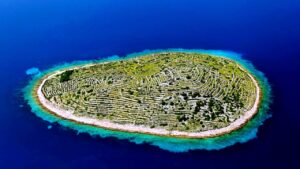
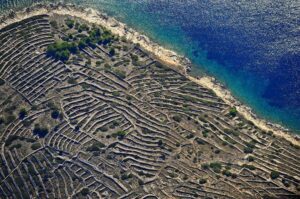 Baljenac (also known as Bavljenac)…a tiny island in the Adriatic Sea, just off the coast of Croatia, seems to be showing up all over the internet these days. When you first see it, you will be…rather shocked by its appearance, because well, it really looks like a giant fingerprint. My first thought was, “Is that natural, or man-made?” Well, of course, the structures are man-made, but their original intent was not to create a giant fingerprint. These dry-stone walls that make up the web that covers the island, have been there for centuries, and their purpose is very different than how they make the island look from the air.
Baljenac (also known as Bavljenac)…a tiny island in the Adriatic Sea, just off the coast of Croatia, seems to be showing up all over the internet these days. When you first see it, you will be…rather shocked by its appearance, because well, it really looks like a giant fingerprint. My first thought was, “Is that natural, or man-made?” Well, of course, the structures are man-made, but their original intent was not to create a giant fingerprint. These dry-stone walls that make up the web that covers the island, have been there for centuries, and their purpose is very different than how they make the island look from the air.
The island is located in the Sibenik archipelago on the Dalmatian coast. The island is quite small…just .75 square miles, and it is completely covered by the web of dry-stone walls. The island’s oval shape along with the web of walls makes it look amazingly like a fingerprint. The long lines of low walls, combined with the oval shape bring about the amazing resemblance. Apparently, these dry-stone walls are not that uncommon in west European nations such as Ireland, England and Scotland, much of Croatia’s countryside. The dry-stone walls hug many of these island nations. Originally, they were used for centuries, to mark boundaries between adjacent agricultural lands. That might make sense, but the walls on Fingerprint Island don’t seem to allow for a very big garden, much less be a separation of agricultural lands. Aside from defining agricultural boundaries, the walls also keep out strong winds known as “Bura” that would make cultivation impossible in exposed locations along the coastline. The walls, however strange and however strange they make the landscape look, served a great purpose, especially since they withstood the test of time.
The walls are unusual because they were built without mortar to hold the stones together. Instead, builders carefully select stones and stack them snug together like puzzle pieces. That seems like a recipe for the collapse of the walls, and yet they have stood in place for centuries. They did have large amounts of rock to work with, because much of Croatia’ coastline is characterized by karst topography…meaning it’s rocky. If 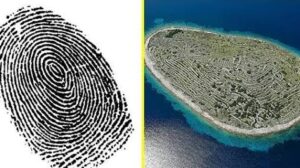 you’re going to grow much on rocky terrain, you have to remove the rocks. So, the farmers painstakingly picked rocks out of the soil by hand and then used the same stones to construct walls around geometric plots. The work, planned to create boundaries, created grids in some cases…and the grids stretched for miles. That seems odd in itself, but in the case of Baljenac (Fingerprint Island), an island just .31 miles long, the walls stretch for 14.29 miles. Because of the length of time the grid has been there, the Croatian government has been pushing the UNESCO to include the island and its dry-stone walls in their World Heritage Sites list.
you’re going to grow much on rocky terrain, you have to remove the rocks. So, the farmers painstakingly picked rocks out of the soil by hand and then used the same stones to construct walls around geometric plots. The work, planned to create boundaries, created grids in some cases…and the grids stretched for miles. That seems odd in itself, but in the case of Baljenac (Fingerprint Island), an island just .31 miles long, the walls stretch for 14.29 miles. Because of the length of time the grid has been there, the Croatian government has been pushing the UNESCO to include the island and its dry-stone walls in their World Heritage Sites list.
 Long before James Madison became out fourth President of the United States, he served in a number of other positions. Early on, Madison emerged as an important leader in the House of Representatives and was a close adviser to President George Washington. While many of the early leaders of our nation understood and were prepared to fight for our freedom, they weren’t necessarily eloquent speakers or writers, but then again, many politicians today also have speech writers. I guess each felt the need to work on the important things, and delegate the rest. Since James Madison was well-known as an excellent writer, President Washington asked him to write a letter to Congress for him expressing that he was excited to work with them. Washington wasn’t the greatest wordsmith, and Madison was an excellent writer, so he had Madison do the job.
Long before James Madison became out fourth President of the United States, he served in a number of other positions. Early on, Madison emerged as an important leader in the House of Representatives and was a close adviser to President George Washington. While many of the early leaders of our nation understood and were prepared to fight for our freedom, they weren’t necessarily eloquent speakers or writers, but then again, many politicians today also have speech writers. I guess each felt the need to work on the important things, and delegate the rest. Since James Madison was well-known as an excellent writer, President Washington asked him to write a letter to Congress for him expressing that he was excited to work with them. Washington wasn’t the greatest wordsmith, and Madison was an excellent writer, so he had Madison do the job.
James Madison was excited to be a part of this first administration and wanted to give it his very best effort. So, in one of his first official actions under President George Washington, Madison wrote a beautiful letter to Congress. Congress was very impressed with the “letter from President Washington” and wanted to impress him with a letter of their own. So, naturally, they chose the best qualified person to write a response to President Washington…you guessed it, James Madison. So, Madison wrote a response to the original letter, that he wrote, saying that Congress was also very excited to be working with the president.
Under normal circumstances, you would expect that the two letters would be the end of the matter, and the new administration would proceed to get down to business. You would be wrong. President Washington decided to send a response to the response, and to make matters even more ludicrous, Congress sent a response to  that response as well. As it turns out, and of course, Madison wrote those other letters too. So, all in all, Madison had a whole little conversation with himself by mail in the form of four separate letters. Of course, he still represented the president and congress, but it’s quite likely that no one actually read the letters before they were sent, or at least didn’t really read them carefully…not until the received them anyway. Nevertheless, James Madison wanted to do the very best job he could for both President Washington and for Congress. If he had not don’t an exceptional job, they would not ask for his help again, and his career could have been over. Somehow, I don’t think that was his real motive in writing the excellent letters. I think he wanted to be of good service to the president. Still in the end, Madison’s first official act for President Washington was to write four letters…to himself.
that response as well. As it turns out, and of course, Madison wrote those other letters too. So, all in all, Madison had a whole little conversation with himself by mail in the form of four separate letters. Of course, he still represented the president and congress, but it’s quite likely that no one actually read the letters before they were sent, or at least didn’t really read them carefully…not until the received them anyway. Nevertheless, James Madison wanted to do the very best job he could for both President Washington and for Congress. If he had not don’t an exceptional job, they would not ask for his help again, and his career could have been over. Somehow, I don’t think that was his real motive in writing the excellent letters. I think he wanted to be of good service to the president. Still in the end, Madison’s first official act for President Washington was to write four letters…to himself.
 Erno Rubik is a name that is known worldwide…well, maybe not the name Erno, but certainly the name Rubik. Erno Rubik Jr was born on July 13, 1944, in Budapest, Hungary, to Erno Rubik Sr, a flight engineer at the Esztergom aircraft factory, and Magdolna Szántó, a poet. He was born during World War II and has lived all of his life in Hungary. He credits his father as his inspiration for his successes. The younger Rubik became famous for inventing the Rubik’s Cube and other puzzles, but his work isn’t all about puzzles. In fact, much of his recent work involves the promotion of science in education. Rubik is also involved with several organizations such as Beyond Rubik’s Cube, the Rubik Learning Initiative, and the Judit Polgar Foundation. All of these organizations aim to engage students in science, mathematics, and problem solving at a young age.
Erno Rubik is a name that is known worldwide…well, maybe not the name Erno, but certainly the name Rubik. Erno Rubik Jr was born on July 13, 1944, in Budapest, Hungary, to Erno Rubik Sr, a flight engineer at the Esztergom aircraft factory, and Magdolna Szántó, a poet. He was born during World War II and has lived all of his life in Hungary. He credits his father as his inspiration for his successes. The younger Rubik became famous for inventing the Rubik’s Cube and other puzzles, but his work isn’t all about puzzles. In fact, much of his recent work involves the promotion of science in education. Rubik is also involved with several organizations such as Beyond Rubik’s Cube, the Rubik Learning Initiative, and the Judit Polgar Foundation. All of these organizations aim to engage students in science, mathematics, and problem solving at a young age.
All his life, the younger Rubik displayed artistic abilities. He attended the Secondary  School of Fine and Applied Arts, from 1958 to 1962, specializing in sculpture. He attended the Budapest University of Technology from 1962 to 1967, where he also became a member of the Architecture Faculty. He then attended the Hungarian Academy of Applied Arts and was in the Faculty of Interior Architecture and Design from 1967 to 1971. While a professor of design at the academy, Rubik pursued his hobby of building geometric models. One of these became the prototype of his cube. It was made of 27 wooden blocks, with seems common to Rubik’s Cube experts of today, but when it was built, it actually took Rubik a month to solve the problem of the cube!! Go figure!! As of June 2018, the world record for solving the Rubik’s Cube is 4.22 seconds.
School of Fine and Applied Arts, from 1958 to 1962, specializing in sculpture. He attended the Budapest University of Technology from 1962 to 1967, where he also became a member of the Architecture Faculty. He then attended the Hungarian Academy of Applied Arts and was in the Faculty of Interior Architecture and Design from 1967 to 1971. While a professor of design at the academy, Rubik pursued his hobby of building geometric models. One of these became the prototype of his cube. It was made of 27 wooden blocks, with seems common to Rubik’s Cube experts of today, but when it was built, it actually took Rubik a month to solve the problem of the cube!! Go figure!! As of June 2018, the world record for solving the Rubik’s Cube is 4.22 seconds.

The Rubik’s Cube proved to be a useful tool for teaching algebraic group theory, and in late 1977 Konsumex, Hungary’s state trading company, began marketing it. From there, in 1980, the Rubik’s Cube went global. It was marketed throughout the world, and over 100 million authorized units, with an estimated 50 million unauthorized imitations, were sold, mostly during its subsequent three years of popularity. I guess you could say that Erno Rubik had arrived!! Approximately 50 books were published describing how to solve the puzzle of Rubik’s Cube. Following his cube’s popularity, Rubik opened a studio to develop designs in 1984. One of the products that came out of that studio was another popular puzzle toy, Rubik’s Magic.
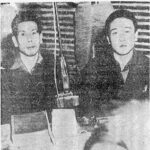
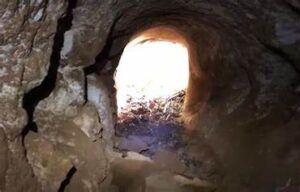 When a soldier is told to guard an area for his country, he does just that, but on this occasion, this job of “guarding” an area, or an island in this case, was taken to extremes. For a time, the Allies struggled against the Japanese, but by 1945, the tide of World War II had turned decisively against Japan. The Japanese got really nervous as the Americans advanced across the Pacific, drawing ever closer to the Japanese home islands. The American strategists set their sights on Iwo Jima, a small volcanic island about 750 miles south of Tokyo. They saw it as a suitable staging area for an eventual invasion of Japan. Of course, the Japanese were very aware of the threat posed by Iwo Jima landing in American hands. So, they knew they had to garrison the island.
When a soldier is told to guard an area for his country, he does just that, but on this occasion, this job of “guarding” an area, or an island in this case, was taken to extremes. For a time, the Allies struggled against the Japanese, but by 1945, the tide of World War II had turned decisively against Japan. The Japanese got really nervous as the Americans advanced across the Pacific, drawing ever closer to the Japanese home islands. The American strategists set their sights on Iwo Jima, a small volcanic island about 750 miles south of Tokyo. They saw it as a suitable staging area for an eventual invasion of Japan. Of course, the Japanese were very aware of the threat posed by Iwo Jima landing in American hands. So, they knew they had to garrison the island.
Ymakage Kufuku and Matsudo Linsoki were two Japanese machine gunners assigned to the island’s garrison. I can only imagine how they must have felt, knowing that the attack was imminent, and that they could only sit and wait for it. In February of 1945, Iwo Jima was invaded in one of the fiercest and bloodiest battles of the entire Pacific War. The Japanese soldiers fought frantically, almost to the last man. Japanese soldiers were taught that it was more honorable to die that survive, if they lost the war. They were taught that rather than surrender, the honorable thing to do was to commit suicide, so out of a garrison of 21,000 Japanese, nearly 20,000 died before the island was declared secured.
Kufuku and Linsoki were among the few Japanese soldiers who didn’t die in the fighting and didn’t commit suicide. They also believing what their government told them about Americans torturing and killing prisoners, so they were too afraid to surrender. The two men felt like they had no choice but to go underground. They also expected that soon the Japanese would be able to take the island back, so they hid during the day in the multitude of tunnels that were all over the island. They came out at night pilfer food and other necessaries from the American garrison’s supply and trash dumps. It was a tough kind of life, but by doing this, Kufuku and Linsoki managed to survive for a long time in a barren and inhospitable island that was mighty short on both vegetation and game. The Americans weren’t interested in exploring Iwo Jima’s hard landscape, a fact that allowed the two Japanese soldiers to go unnoticed for years.
Finally, on January 6th, 1949, two US Air Force corporals in a Jeep spotted a couple of pedestrians in uniforms that looked to be a few sizes too big. The men were walking alongside a road. The soldiers thought the men were Chinese laborers. The men spoke no English and they didn’t seem to want to talk, but the American airmen just assumed they were hitchhiking to the island’s main base and gave them a lift. They dropped them off in front of the garrison’s headquarters building. That probably left Kufuku and Linsoki a little bit unnerved. Nevertheless, they didn’t want to seem suspicious, so they wandered around the American base for hours, at least until a passing American sergeant realized that they were Japanese and took them in. The men were 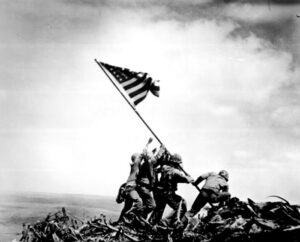
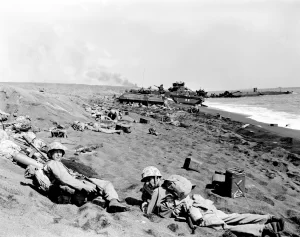 interrogated, and afterward, they took their captors to their hideout. There, to their amazement, the Americans found a cave richly stocked with canned foods, flashlights, batteries, uniforms, boots, shoes, socks, and other goods that the pair had been pilfering over the years. I’m quite sure they recognized some of the items from the base. While the Japanese soldiers did no real harm, their self-imposed secret mission had come to an end.
interrogated, and afterward, they took their captors to their hideout. There, to their amazement, the Americans found a cave richly stocked with canned foods, flashlights, batteries, uniforms, boots, shoes, socks, and other goods that the pair had been pilfering over the years. I’m quite sure they recognized some of the items from the base. While the Japanese soldiers did no real harm, their self-imposed secret mission had come to an end.
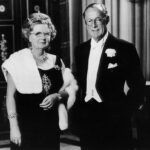 During World War II, a number of royal families considered leaving their countries for a time, due to potential dangers to them and their families. Many of the royals decided that they shouldn’t leave. As for Prince Bernhard, husband of Crown Princess Juliana was serving in the Royal Airforce. It was thought that Princess Juliana, and her daughters would be safer in Canada, so they relocated in in June of 1940. In the years she was there, the couple became pregnant with their third child, who would now be born in Canada, unless something drastically changed.
During World War II, a number of royal families considered leaving their countries for a time, due to potential dangers to them and their families. Many of the royals decided that they shouldn’t leave. As for Prince Bernhard, husband of Crown Princess Juliana was serving in the Royal Airforce. It was thought that Princess Juliana, and her daughters would be safer in Canada, so they relocated in in June of 1940. In the years she was there, the couple became pregnant with their third child, who would now be born in Canada, unless something drastically changed.
With the relocation of the royal family, and now the impending birth, which could, I suppose cause a bit of a problem like the one that exists in the United States, when a child who could later go on to run for president, is born in another country. Our law requires that the child be born on US soil, like a military base or something. Of course, that may not be the law in the Netherlands, but whatever the case may be, the Canadian government was compelled to do something anyway. So, the decision was made that in 1943, the Canadian government temporarily declared a maternity ward of Ottawa Civic Hospital to be extraterritorial. This struck me as funny, because at first glance, I thought it said extraterrestrial!! I thought, “What are they talking about??” Then, I realized that my first glance had been  deceiving. I suppose that is good news for the royal family of the Netherlands, who would not be the parents of an alien from outer space.
deceiving. I suppose that is good news for the royal family of the Netherlands, who would not be the parents of an alien from outer space.
Comedy aside, this change was made because Dutch princess Margriet was to be born at the maternity ward of Ottawa Civic Hospital. With this change, the maternity ward suddenly fell outside of the Canadian domain, causing it to be unaffiliated with any jurisdiction and technically international territory. The purpose was to ensure that the newborn would derive her citizenship from her mother only, thus making her solely Dutch. While this change didn’t matter much since Princess Margriet was a girl, and thereby third in line for the throne. It could have been very important, if the child had been male, and as such, the heir of Princess Juliana. Many countries with a royal family move the sons ahead of any older sisters in the line of succession to the throne. England recently changed that law, meaning that HRH Princess Charlotte (currently 3rd) was not passed by HRH Prince Louis  (currently 4th) in the line of succession there.
(currently 4th) in the line of succession there.
The birth of Princess Margriet came about thusly. “It was the height of the Second World War, things were still not going well for the Allies, when a brief bit of good news came in the midst of darkness. The German forces had already rolled over much of Europe, smashing resistance before them, including the brave but futile defense of Holland. The Dutch Crown Princess Juliana and her two daughters had fled the German invasion and arrived in Canada in June 1940. On January 9, 1943, Dutch Princess Margriet was born at the Ottawa Civic Hospital. Crown Prince Bernhard came from London where he was serving with the Royal Air Force, to be present for the birth. The Royal Family returned to Holland shortly after the war.”
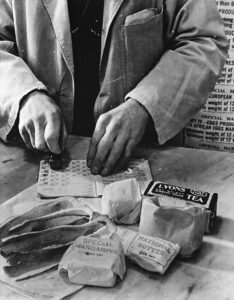
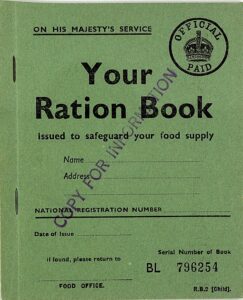 When my dad, Staff Sergeant Allen Spencer, was serving in the Army Air Force during World War II, rationing was not an unusual thing. Nevertheless, most of us think of rationing to be in the form of gas rationing. That is pretty much the kind of rationing we have heard being used these days, but on January 8, 1941, the government of the United Kingdom began a different kind of rationing…food. I can see the value of such a thing, because by limiting the amount of food each person could have, they could ensure that everyone was able to get enough food to sustain them. People weren’t going to gain weight on the amount of food allowed, but they could survive. I suppose the fact that there were so many extra people, in the form of the military forces, just added to the need to ration.
When my dad, Staff Sergeant Allen Spencer, was serving in the Army Air Force during World War II, rationing was not an unusual thing. Nevertheless, most of us think of rationing to be in the form of gas rationing. That is pretty much the kind of rationing we have heard being used these days, but on January 8, 1941, the government of the United Kingdom began a different kind of rationing…food. I can see the value of such a thing, because by limiting the amount of food each person could have, they could ensure that everyone was able to get enough food to sustain them. People weren’t going to gain weight on the amount of food allowed, but they could survive. I suppose the fact that there were so many extra people, in the form of the military forces, just added to the need to ration.
Of course, some food rationing occurred before this date too. Rationing was introduced temporarily by the government of the United Kingdom several times during the 20th century, during and immediately after a war. At the start of World War II in 1939, the United Kingdom was importing 20 million long tons of food per year, including about 70% of its cheese and sugar, almost 80% of its fruit and about 70% of its cereals and fats. It also imported more than half of its meat and relied on imported feed to support its domestic meat production. The civilian population of the country alone, was about 50 million. It was one of the principal strategies of the Germans in the Battle of the Atlantic to attack shipping bound for Britain, restricting British industry and 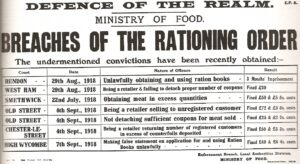 potentially starving nations into submission. Siege tactics were not unusual and have been used throughout history by several countries.
potentially starving nations into submission. Siege tactics were not unusual and have been used throughout history by several countries.
So, to deal with the various forms of shortages, and sometimes extreme shortages, the Ministry of Food instituted a system of rationing. Basically, the Ministry of Food would buy most rationed items, forcing anyone who wanted some of these items to register at chosen shops. Upon registration, they were provided with a ration book containing coupons. The shopkeeper was provided with enough food for registered customers. Purchasers had to present ration books when shopping so that the coupon or coupons could be cancelled as these pertained to rationed items. Rationed items had to be purchased and paid for as usual, although their price was strictly controlled by the government and many essential foodstuffs were subsidized. Basically, rationing restricted what items and what amount could be purchased, as well as what they would cost. To make matters worse the items that were not rationed could be scarce, because the Ministry of Food did not purchase said items. The priced for some of the unrationed items were also controlled by the Ministry of Food, and for many people those prices were too high for them to be able to afford, causing people to try to cheat the system, and merchants to try to either assist the people or to gouge the public in order to make a buck. This brought penalties for 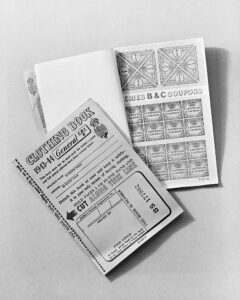
 breaking the laws of rationing.
breaking the laws of rationing.
During the World War II, rationing was not restricted to food, and was part of a strategy including controlled prices, subsidies, and government-enforced standards. The goal for this controlled pricing and rationing was to manage scarcity and prioritize the armed forces and essential services with the supplies they needed first. They did still try to make available to everyone, an adequate and affordable supply of goods of acceptable quality. I suppose that how well they accomplished their goal, would be a matter of opinion. Of course, like all wars, World War II ended, as did the rationing of the time, but rationing has returned a number of times, and will again, should the need arise.

 When the FBI began to suspect that they had a mole in the mid-1980s, they assigned the investigation to FBI Agent Robert Philip Hanssen. Hanssen was born April 18, 1944, in Chicago, Illinois, to a Lutheran family that lived in the Norwood Park neighborhood. He was of Norwegian descent. His father, Howard, who died 1993, was a Chicago police officer, and was allegedly emotionally abusive to Hanssen during his childhood. Nevertheless, Hanssen went on to graduate from William Howard Taft High School in 1962 and attended Knox College in Galesburg, Illinois. He graduated with a bachelor’s degree in chemistry in 1966. Hanssen joined the FBI in 1976. Things were going well for him in the FBI, but then, something changed.
When the FBI began to suspect that they had a mole in the mid-1980s, they assigned the investigation to FBI Agent Robert Philip Hanssen. Hanssen was born April 18, 1944, in Chicago, Illinois, to a Lutheran family that lived in the Norwood Park neighborhood. He was of Norwegian descent. His father, Howard, who died 1993, was a Chicago police officer, and was allegedly emotionally abusive to Hanssen during his childhood. Nevertheless, Hanssen went on to graduate from William Howard Taft High School in 1962 and attended Knox College in Galesburg, Illinois. He graduated with a bachelor’s degree in chemistry in 1966. Hanssen joined the FBI in 1976. Things were going well for him in the FBI, but then, something changed.
In 1979, just three years after joining the FBI, Hanssen approached the Soviet Main Intelligence Directorate (GRU) to offer his services. It is thought that he may have had some financial difficulties, and this meeting became the beginning of his first espionage cycle, lasting until 1981. After that, he laid low for a while. Then, in 1981, he restarted his espionage activities and continued until 1991. After that, he ended communications during the collapse of the Soviet Union, because he was afraid that he would be exposed. Hanssen restarted communications the next year and continued until his arrest. Throughout his spying, he remained anonymous to the Russians.
Hanssen spied for Soviet and Russian intelligence services against the United States from 1979 to 2001. His espionage was described by the Department of Justice as “possibly the worst intelligence disaster in US history.” In all, he sold about six thousand classified documents to the KGB that detailed US strategies in the event of nuclear war, developments in military weapons technologies, and aspects of the US counterintelligence program. Hanssen was involved in espionage at the same time as Aldrich Ames in the Central Intelligence Agency (CIA). Both Ames and Hanssen compromised the names of KGB agents working secretly for the United States. Some of those KGB agents were executed for their betrayal. Hanssen also revealed a multimillion-dollar eavesdropping tunnel built by the FBI under the Soviet Embassy. Then in 1994, Ames was arrested. At that time, some of these intelligence breaches remained unsolved, so the search began for another spy. Ironically, they chose the spy himself to search for the spy. How convenient it was for Hanssen. Finally, the FBI paid $7 million to a KGB agent to obtain a file on an anonymous mole. That information led to Janssen’s exposure, when he was identified through fingerprint and voice analysis.
On February 18, 2001, Hanssen was arrested at Foxstone Park, near his home in the Washington DC, suburb of 
 Vienna, Virginia, after leaving a package of classified materials at a dead drop site. Following his arrest, he was charged with selling US intelligence documents to the Soviet Union and subsequently Russia for more than $1.4 million in cash, diamonds, and Rolex watches over a period of twenty-two years. Hanssen pleaded guilty to fourteen counts of espionage and one of conspiracy to commit espionage, to avoid the death penalty. He was sentenced to fifteen life terms without the possibility of parole and was incarcerated at ADX Florence until his death on June 5, 2023.
Vienna, Virginia, after leaving a package of classified materials at a dead drop site. Following his arrest, he was charged with selling US intelligence documents to the Soviet Union and subsequently Russia for more than $1.4 million in cash, diamonds, and Rolex watches over a period of twenty-two years. Hanssen pleaded guilty to fourteen counts of espionage and one of conspiracy to commit espionage, to avoid the death penalty. He was sentenced to fifteen life terms without the possibility of parole and was incarcerated at ADX Florence until his death on June 5, 2023.
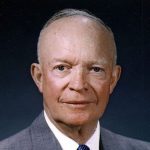
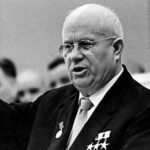 In 1959, President Dwight Eisenhower wanted to convince the Soviet Union that capitalism could greatly benefit the country. If accepted, the Soviet Union would for all intents and purposes become “Americanized” and would probably have been better off. Of course, not everyone agreed with that idea. Nevertheless, Eisenhower, in an effort intended to showcase their ideologies, arranged the “American National Exhibition” in Moscow. To head up the project, they sent Vice President Richard Nixon to attend the opening. What started out as a potentially good idea, quickly took a turn for the worse when Nixon and Soviet leader Khrushchev got into an argument over the topic of capitalism versus communism. Trying to prove someone wrong in their belief system is no easy task, and the conversation quickly got so heated that the vice president of Pepsi intervened and offered the Soviet leader a cup of his delicious, sugary beverage…which he drank…and very much liked.
In 1959, President Dwight Eisenhower wanted to convince the Soviet Union that capitalism could greatly benefit the country. If accepted, the Soviet Union would for all intents and purposes become “Americanized” and would probably have been better off. Of course, not everyone agreed with that idea. Nevertheless, Eisenhower, in an effort intended to showcase their ideologies, arranged the “American National Exhibition” in Moscow. To head up the project, they sent Vice President Richard Nixon to attend the opening. What started out as a potentially good idea, quickly took a turn for the worse when Nixon and Soviet leader Khrushchev got into an argument over the topic of capitalism versus communism. Trying to prove someone wrong in their belief system is no easy task, and the conversation quickly got so heated that the vice president of Pepsi intervened and offered the Soviet leader a cup of his delicious, sugary beverage…which he drank…and very much liked.
Most people who try sodas, like them, and most have a favorite soda that they enjoy whenever they get the opportunity. For Khrushchev and the people of the Soviet Union, this drink was very different from anything they had tasted before, and they were quickly hooked. Years later, the people of the Soviet Union wanted to strike a deal that would bring Pepsi products to their country permanently. The biggest problem, when it came to importing Pepsi to the Soviet Union, was that Soviet money was not accepted throughout the world. They would have to find something they could trade if they wanted to make this deal. So, they cleverly decided to buy Pepsi using a universal currency…vodka!
In the late 1980s, as their initial agreement to serve Pepsi in their country was about to expire, Russia wanted to renew the deal. Unfortunately for them, this time, their vodka wasn’t going to be enough to cover the cost. The question became…what now? They now had to decide just exactly how much they were willing to pay for the addiction that Pepsi really is. In a wild deal, and one that would seem insane to most of us, Russia decided that it was worth giving up a military arsenal big enough to stock a whole country. So, in order to make the 
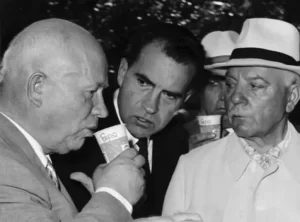 deal, the Russians traded Pepsi a fleet of subs and boats for a whole lot of soda. The new agreement included 17 submarines, a cruiser, a frigate, and a destroyer. Now, that is a whole lot of Pepsi’s worth. In fact, it was three billion dollars’ worth of Pepsi. So, with this historical exchange, Pepsi to become the 6th most powerful military in the world…for a moment anyway. Then, they sold the fleet to a Swedish company for scrap recycling, ending the short-lived military strength of Pepsi. To this day, some people call this a rumor.
deal, the Russians traded Pepsi a fleet of subs and boats for a whole lot of soda. The new agreement included 17 submarines, a cruiser, a frigate, and a destroyer. Now, that is a whole lot of Pepsi’s worth. In fact, it was three billion dollars’ worth of Pepsi. So, with this historical exchange, Pepsi to become the 6th most powerful military in the world…for a moment anyway. Then, they sold the fleet to a Swedish company for scrap recycling, ending the short-lived military strength of Pepsi. To this day, some people call this a rumor.

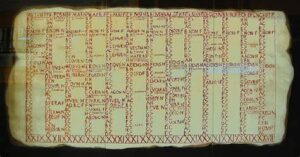 As we move into the new year, we begin to think about how long the year seems…until we look at the year’s end speedily approaching. Then, we realize just how short the year really was, but what if there was a strange “time paradox” that disrupted the “space-time continuum” that we were told about in the movie, Back to the Future? Well, I don’t know if such a “time paradox” could really exist, but in the year 46BC, Julius Caesar did cause a type of disruption in the “space-time continuum” when he decided to revamp the human calendar. Of course, the days went on as usual, but the names of things and the way we looked at them changed. Now, for those of you who hate the whole biannual time change thing…well, this would really blow your body’s natural rhythms out of the water.
As we move into the new year, we begin to think about how long the year seems…until we look at the year’s end speedily approaching. Then, we realize just how short the year really was, but what if there was a strange “time paradox” that disrupted the “space-time continuum” that we were told about in the movie, Back to the Future? Well, I don’t know if such a “time paradox” could really exist, but in the year 46BC, Julius Caesar did cause a type of disruption in the “space-time continuum” when he decided to revamp the human calendar. Of course, the days went on as usual, but the names of things and the way we looked at them changed. Now, for those of you who hate the whole biannual time change thing…well, this would really blow your body’s natural rhythms out of the water.
It seems rather pretty egotistical to just randomly decide that you needed to change up a whole year, and then name the whole thing after yourself to boot, but the Julius Caesar truly thought of himself as a sort of god, I think. It’s not that the pre-Julian Roman calendar didn’t have its problems, because it did, and maybe Caesar thought he was doing a good thing. Still, in the end, the whole maneuver that occurred in the time frame progressing from 46BC to 45BC (note that until Jesus was born, the time was listed as BC, Before Christ and basically went backward. After his birth, time began to go forward, 1AD, 2AD, 3AD, etc. The term anno Domini is Medieval Latin and means “in the year of the Lord” or the year Christ was born.) caused a good bit of confusion…the kind of confusion that would make the time change seem totally insignificant.
The calendar the Romans used were not without fault. The Romans had to periodically add a leap month every few years to keep the calendar year in sync with the solar year. Unfortunately, they had missed a few with the chaos of the civil wars of the late republic. Now if you think the time change is odd, imagine having July suddenly be in the middle of winter in the northern hemisphere. That’s what was happening due to the missed additional leap months that were not happening. The calendar was obviously not well planned. So, to fix things, Caesar chose to take one year, and make a number of drastic changes designed to “get things back on track” once and for all. Nicknamed “the Year of the Consulship of Caesar and Lepidus” or the year of confusion, 46BC had two extra leap months inserted by Julius Caesar. This was in order to make his newly formed Julian Calendar match up with the seasonal year. In the end, 46BC was 445 days long and is the longest year in human history. Julius Caesar added Mercedonius (23 days) and two other intercalary months (33 and 34 days respectively) to the 355-day lunar year, to recalibrate the calendar in preparation for his calendar reform, which went into effect in 45 BC. Of course, the actual planetary orbit-year remained the same. He couldn’t change that. There were still problems with the calendar, but they probably weren’t quite as significant as the old Roman calendar, which required a manual reset of the year periodically.
The Julian Calendar would remain the standard in the western world for over 1600 years, until superseded by the Gregorian Calendar in 1582. The Gregorian calendar that is still widely used today. It is a solar calendar that was first introduced in 1582 by the Catholic Church and replaced the Julian calendar. The Gregorian 
 calendar is used for non-religious administration around the world and has been adopted by 168 countries as their official calendar. The principal change was to space leap years differently so as to make the average calendar year 365.2425 days long. For church functions, the church calendar is in place, and the Jewish people use the Hebrew calendar. I’m sure there are nations that use some other form of calendar, but the Gregorian calendar seems to keep the seasons aligned with the calendar pretty well.
calendar is used for non-religious administration around the world and has been adopted by 168 countries as their official calendar. The principal change was to space leap years differently so as to make the average calendar year 365.2425 days long. For church functions, the church calendar is in place, and the Jewish people use the Hebrew calendar. I’m sure there are nations that use some other form of calendar, but the Gregorian calendar seems to keep the seasons aligned with the calendar pretty well.

